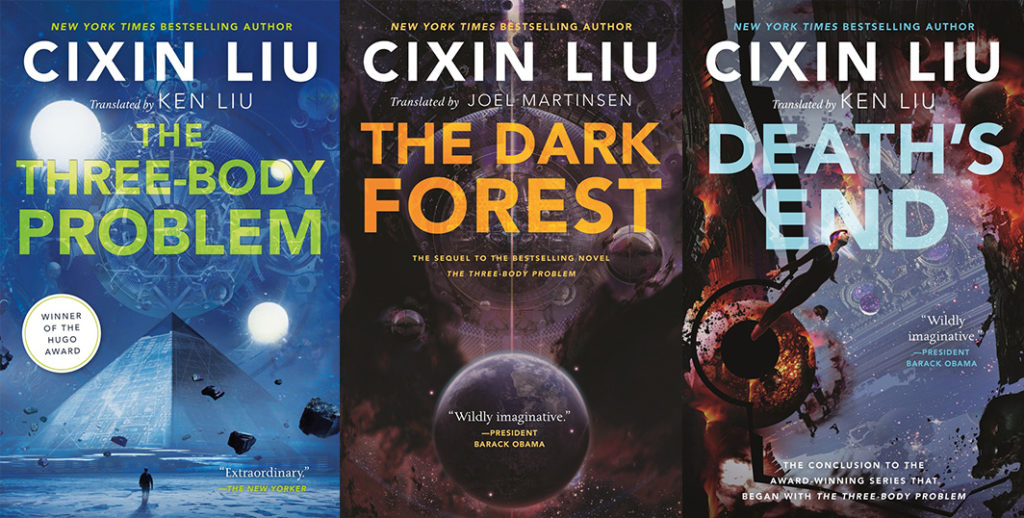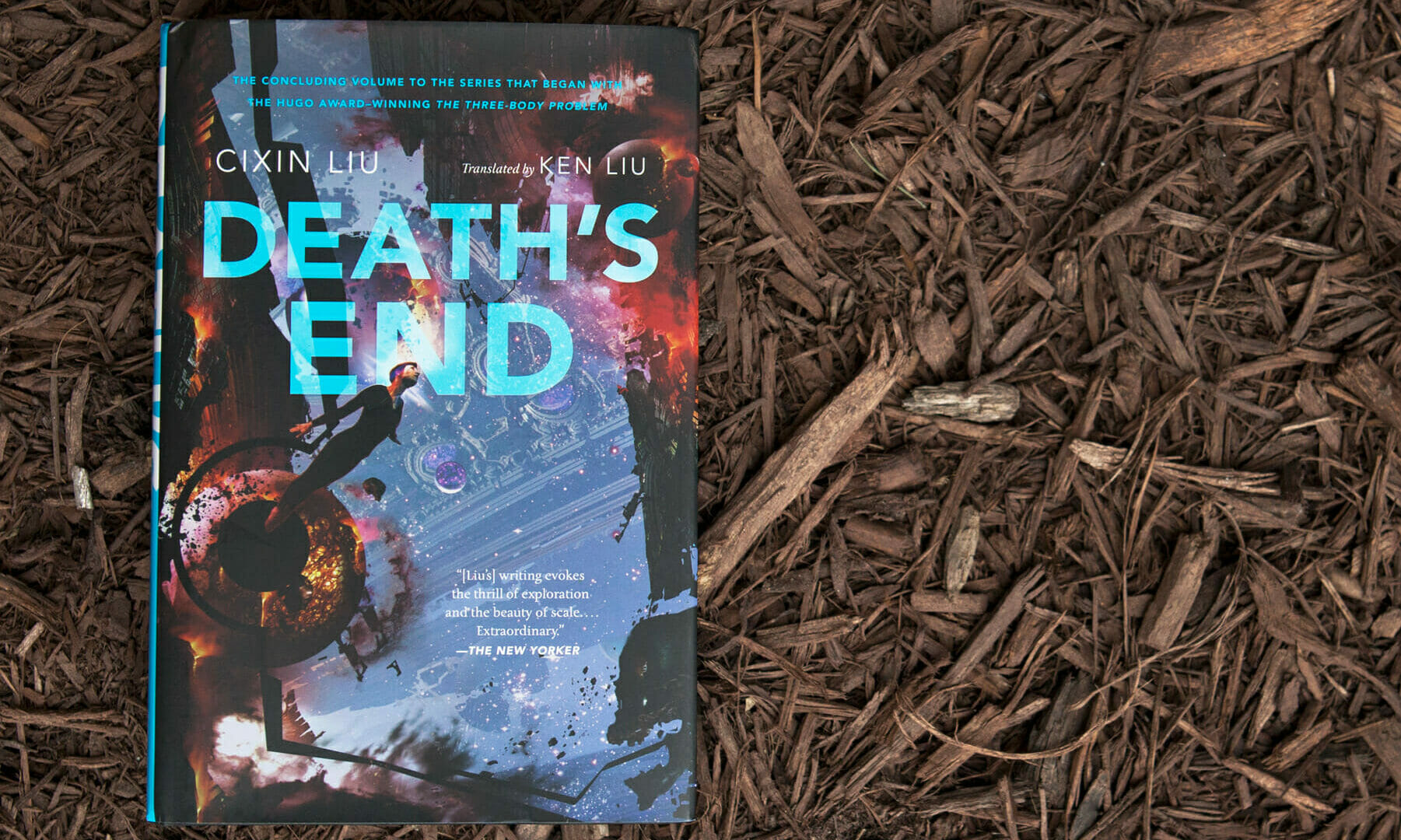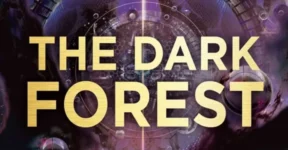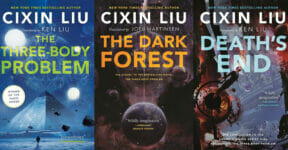Liu Cixin’s Remembrance of Earth’s Past trilogy (English version) began in 2014 with Three-Body Problem, followed by The Dark Forest in 2015, and concluded with Death’s End in 2016. Much like the previous installment, the final volume focuses on a new set of different protagonists who must respond to the consequences of events triggered by decisions made by other characters in the past. The story in Death’s End mainly revolves around the exploits of Cheng Xin, a female aeronautical engineer working at an espionage program, known as the Staircase Project, to gather information from the Trisolaran fleet.

The premise in Death’s End remains pretty much the same as the preceding two volumes in which Earth is under threat of annihilation by the invading fleet of spaceships from Planet Trisolaris. However, it has been well-established in the second volume that the universe is like a dark forest where all intelligent civilizations see each other as a menace, an enemy to be destroyed; an effective way to ensure survival is to remain hidden from detection. At the end of the second book, the Trisolarans agree to a truce because Earth—thanks to Luo Ji—has developed a method to broadcast the location of Trisolaris across the universe.
Decades have passed since the end of The Dark Forest, and now the relationship between Trisolaris and Earth is in a difficult tense time known as “Deterrence Era” in which peace between the two worlds rests on the promise of mutually assured destruction (MAD). If Earth broadcasts Trisolaris’ location, both planets expose themselves to other more advanced aggressive civilizations, and destruction is as good as an inevitability. Luo Ji is the Swordholder, the only person who can be entrusted with the broadcast button.
Cheng Xin has been in hibernation after the failure of the Staircase Project. She has just woken up following the discovery of planets around DX3906 by an astronomer AA. The DX3906 is a distant star gifted to Cheng Xin by engineer Yun Tianming, who disappeared during the project’s spy mission. Thanks to her past experience in the espionage program and status as an owner of another world, she becomes the natural replacement for Luo Ji as the next Sword holder. Cheng Xin and AA sell the planets to Earth but retain ownership of the star. They use the money to establish the Halo company.
By now the Trisolarans have not yet abandoned their plan to invade Earth. They launch an attack as soon as Cheng Xin officially becomes the Sword holder. There is no way to initiate the MAD broadcast from Earth because all sources of electricity have been destroyed in the attack. A spaceship named Gravity, however, remains capable of launching a MAD broadcast. The Trisolarans are forced to retreat from the invasion, knowing that Earth along with the entire solar system will be targeted by other advanced extraterrestrial species. Everything soon vanishes and Luo Ji meets his demise on Pluto.
Cheng Xin and AA flee to Planet Blue in the orbit of DX3906. They meet Guan Yifan, a cosmologist from the spaceship Gravity. Planet Blue has been colonized by humans, but it is located eerily close to Planet Gray, which is known for showing indications of alien activities. Cheng Xin and Guan Yifan embark on an expedition to investigate signs of intelligent life on the planet. During the expedition, the latter explains that the universe is on the brink of total collapse due to continuous galactic warfare. Some civilizations create black holes as defense mechanisms to prevent foreign attacks, and the black holes are a constant disruption to space-time.
They receive a message from AA that the clone of Yun Tianming, after spending decades in the custody of Trisolarans, has finally arrived on Planet Blue. Their spaceship inadvertently enters a black hole on the return journey and has to remain inside for 16 days until the onboard electronics can restart. What they don’t realize is that 18 million years have passed since they come out. Upon returning to Planet Blue, Yun Tianming and AA have long been dead.
Cheng Xin and Guan Yifan discover a pocket universe left behind by Yun Tianming. Created using Trisolaran technology, the pocket universe is only one cubic kilometre in size, but it has enough space for Cheng Xin and Guan Yifan to live together. They will be accompanied by Sophon, a Trisolaran diplomat. What seems to be a peaceful conclusion turns out to be anything but. The pocket universe is not the only one; there are countless others that deprive the main universe of mass, preventing it from completing the cycle of expansion, collapse, and rebirth. The mass must be returned to the main universe, otherwise, there will be no Big Crunch followed by another Big Bang. In other words, the already damaged universe can never reset. So, they must disassemble the micro-universe, return the mass to the main universe, and die in the process.

In terms of scope and timeline, Death’s End is much more expansive than either The Three-Body Problem or The Dark Forest. The final volume starts somewhat before the beginning of the first novel and extends to the millions of years that follow. While the basic premise does not change much, since the trilogy basically is one very long story, Death’s End replenishes the plotline with elaborate twists and turns before ending it all with a grand farewell. It is both complicated and sophisticated, the only worthy conclusion to a complex trilogy.
Have you finished the trilogy yet? Do you think the imaginative story is worth the complexity? Let us know. We’d love to hear from you.
Other things you might want to know:
Who provided the translation?
Death’s End was originally published in November 2010. The English-translated version by Ken Liu first appeared in September 2016. Ken Liu also provided the translation for The Three-Body Problem.
What to read next after Death’s End?
Remembrance of Earth’s Past is a trilogy, so the story ends with the third novel. However, there is an “unofficial” fourth novel in the series by Liu Jin under the pseudonym of Baoshu. Originally written as a fan fiction and an online forum, the story was eventually published by Chongqing Press (publisher of the original trilogy) in 2011 with permission from Lui Cixin. The English-translated version, The Redemption of Time, began circulating in 2019.
What are some other English-translated books by Liu Cixin?
Apart from the trilogy, some of Liu Cixin’s translated books include:
- The Wandering Earth: Classic Science Fiction Collection
- With Her Eyes
- Taking Care of Gods
- Of Ants and Dinosaurs
- The Wages of Humanity
- The Micro-Age
- Devourer







